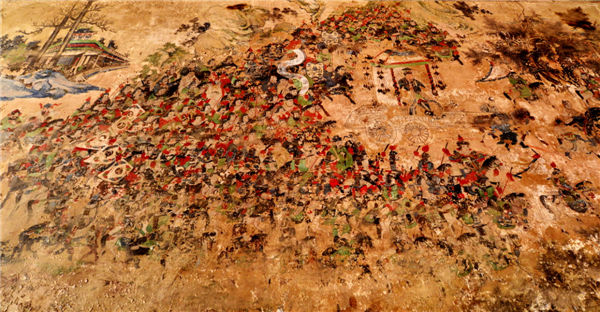A mountain that scales China's history
 |
|
A giant Taoist mural from the Song Dynasty (960-1279) depicts a grand inspection by the deities of Mount Taishan, which features forests, palaces, bridges and 697 people. |
"Among the mountains of China, Mount Taishan is the most intertwined with Chinese history. Cultural interests and natural landscapes are well integrated into the mountain," said Du Xiaofan, a member of UNESCO's Beijing office.
Mount Taishan, with its dense forests and ancient temples, has been the site for imperial pilgrimages for roughly 2,000 years, according to UNESCO, and the artistic masterpieces found throughout the mountain are in perfect harmony with the natural landscape.
Standing 1,545 meters above sea level, the mountain is by no means the tallest in China, but it is among the first to be blessed with the sunrise's golden hues because of its geographical location in East China. It was regarded in ancient times as the closest position to the sky.
Over 3,000 years, Chinese emperors have made pilgrimages to Mount Taishan to pray to the gods. Scholars and poets have marveled at the majesty of the mountain and composed poems and prose in honor of it, some inscribing them on the mountain.
Twelve emperors, beginning with Qin Shihuang, the first emperor that unified China in 221 BC, have paid homage in a ritual called "Fengshan Sacrifices" at Mount Taishan, said Lyu Jixiang, a researcher with Taishan's management committee.
"There are more than 2,000 rock inscriptions and stone tablets testifying to visits by emperors and scholars," said Lyu.
Lyu said more than 10,000 poems and works of prose have been found.














